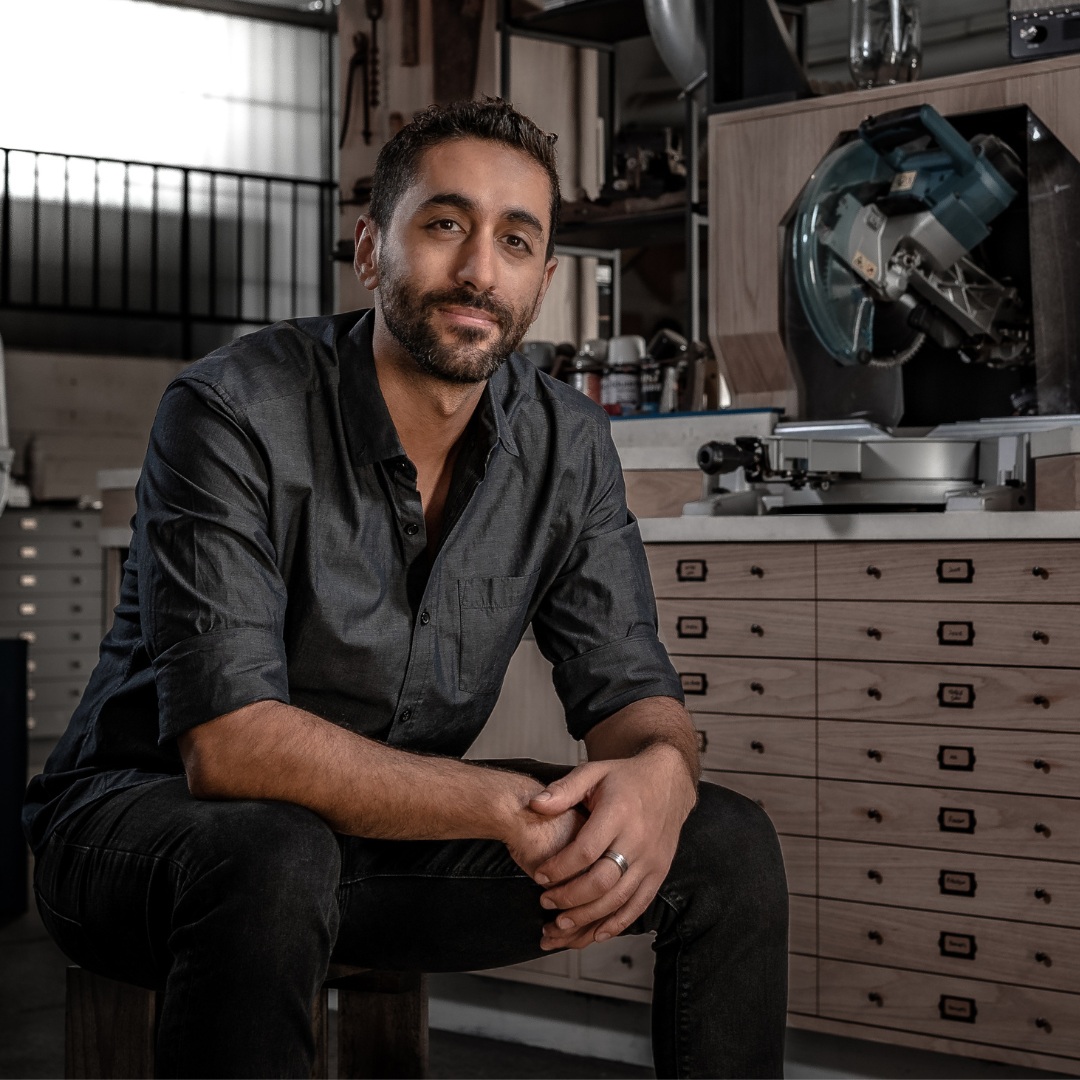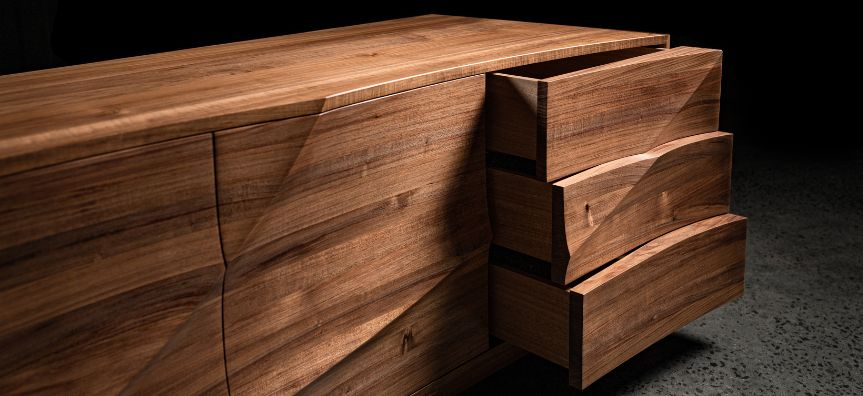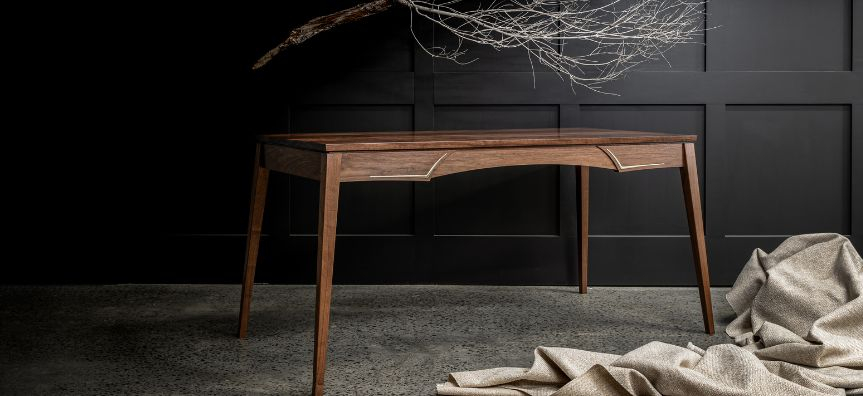
Pedulla Studio is owned and operated by Craftsman Nick Pedulla. With over 15 years experience in the industry, not to mention the countless hours spent as a child in his parents garage learning the art of woodworking.
Creating unique, custom made furniture is at the heart of what Nick does. Specialising in furniture design & construction, he works in collaboration with his clients to produce handmade furniture in modern, contemporary & traditional designs.
Located on Sydney’s Northern Beaches. Get in touch today to discuss your perfect piece of furniture, or book in a time to visit Nick’s workshop where you can see his current works as well as view timber and finish samples.
See Nick speaking with other craftspeople at Talking Timber. Part of Creative Open 2024, Sunday 28 July, 10 - 11am.
When talking about your childhood, you’ve said you were fascinated by how things were made, and what happened when you pulled them apart. It sounds like the discovery of Lego was a game changer, especially when you threw out the instructions!
From these creative beginnings, how did you develop a career in craft? Further, how do you maintain that same sense of curiosity and play in your work?
After completing the HSC it was time to figure out what career path I wanted. This seemed to be a stressful time for many of my friends, which is understandable as it was a big question looming over everyone’s head. For me it seemed obvious to continue doing what I loved doing, so I sat down and found all the available courses that would allow me to be a woodworker, more specifically a furniture maker.
I ended up deciding to start a cabinet-making apprenticeship and this was the start of a 20-year long career.
It’s actually quite easy to maintain my curiosity and play. I love what I do so I feel this comes naturally. I don’t really consider what I do a job or career. It’s a part of who I am, so I guess the curiosity is simply built into my way of doing things.
You craft unique pieces of furniture, with many of your works accurately described as sculptural works of art. On the Shop Stool Podcast you admitted, “I hate building things twice”. Why is making one-of-a-kind pieces important to you?
The main reason I love building is because it’s a journey into the unknown. This is exciting and truly sparks my curiosity, as for whatever reason my creative mind seems to work best when trying to solve a solution to a problem.
Making a piece for the first time allows my mind to work on all cylinders, and while this can be stressful, it’s still an absolute joy. It’s one of the best feelings in the world to have an idea in my mind, then after some hard work, see it standing in front of me.
But, when a piece is successfully completed, no matter how complicated it is, I now know how to build it. There’s no more curiosity or problems to solve because it’s been done and at that point I’m now bored and want to move onto the next exciting idea. Plus, I love the fact that my client can have a piece in their home that doesn’t exist anywhere else in the world, which is pretty incredible when you really think about it.
Your creations play a central role in peoples’ homes. They eat meals at your tables, sleep on your bedframes, and reach for a drink from the most exquisite whisky cabinets.
What is your process for working with clients in your design and construction process?
Usually, I like to start the process with a conversation, either over the phone or in person. This not only allows me to present myself as the face of my business, but also allows me to get to know my client a little bit. Understanding their personality helps with the overall design of the piece.
From this point I send them an online questionnaire, as well as a design package that once completed, provides my client with 3 different custom designs all based on their initial brief, designed to their budget.
It’s a process that I find enjoyable and one that I hope my client gets excited about too, as getting a custom made piece of furniture is very different to walking into a store and saying “I want that one”, so I feel the process should also be different.
The Vigne Bench was a self-initiate passion project. You’ve mentioned it’s difficult to find a unique voice in the craft industry, and this project was one way to help you express yours.
How valuable is self-initiated work to you as a creative and your studio as a business, and how do you balance personal work with client work?
I think it’s incredibly important to create your own pieces that express yourself in this industry. As great and fulfilling as client work is, the reality is you’re still building someone else’s vision. Now this is a great thing as you can earn a living, and also develop your skills as a maker, but when do you get to express these skills?
As my career has progressed, I've managed to sell some of my ideas to clients. These are the dream jobs where you get paid to create your vision. So for many of these builds I took the opportunity to film them and put the video on YouTube, which has taken my business down a completely new path for me. My videos average 600k views per video and thanks to this incredible audience I was able to start a Patreon account where people pay me a monthly subscription to learn more in-depth knowledge of the pieces I make.
It’s this new avenue that allows me to build more passion pieces and bring people along for the journey, rather than just having to focus on building client pieces.
Are mistakes annoying or important – or both? In a recent YouTube video you admitted to making mistakes while building storage for your workshop – which you skilfully resolved! The errors didn’t seem to faze you, you solved them and moved on.
What advice would you give to someone developing their craft, particularly as they come across challenges? Or, is there advice you wish someone had given you at a younger age?
This has been a struggle I dealt with for many years at the beginning, and even half way into my career. It really is such a defeating feeling when you make a mistake on a piece that you’re fully invested in - creatively, financially, and even emotionally.
What I've come to learn is if you’re not making mistakes then you’re not pushing yourself enough, you’re not trying to better yourself. If you follow this mentality, you will get better as a maker and you’ll make less mistakes, but when you inevitable do make a mistake, you have the skillset to fix it like it never happened.
You’ve developed a strong community around your practice. You engage with everyone from professional woodworkers to the craft-curious through your YouTube videos, Instagram account, and particularly the following you’ve built on Patreon. Not to mention events like the upcoming Talking Timber as part of Creative Open.
You clearly do all the woodworking, but you also film, photograph, edit, and manage all this content on your own. Why do you spend so much time creating this content and engaging with other craftspeople?
This goes back to what I said earlier about loving what I do. I've always loved woodworking and since starting my business I've developed a passion for photography and filming and editing videos. And in more recent years I've developed a love for teaching and showing people the tricks of the trade and the skills that my Grandfather passed on to me back when I was young.
I enjoy engaging with other craftspeople because we have a common interest. We have the same mindset and I learn a lot from other people’s experiences and ways of thinking.
The content side is now a major part of my income with YouTube and Patreon really allowing a new section of my business to open up. It’s this part that allows me to share what I do with people all around the world, which I enjoy. Particularly because when I was a young woodworker, it was very difficult to get information, especially from professionals as they would hold their cards close to their chest. I remember feeling like I wasn’t part of a community because so many people were gatekeepers to a craft that I was very passionate about. I’m sure part of the reason why I share what I do is a response to the way I was treated as a young woodworker. I want everyone to know everything I have to offer if it will make them better at their craft.
We’ve heard you have a secret project in the works, even more complex than the Vigne Bench. Can you share anything about it?
I’m currently building a whisky cabinet that follows the same design features as the Vigne Bench, with a lot more details. That’s all I’ll say for now, but if anyone is interested I've been documenting the entire process on my Patreon, and once completed there will be a full build video on YouTube.



